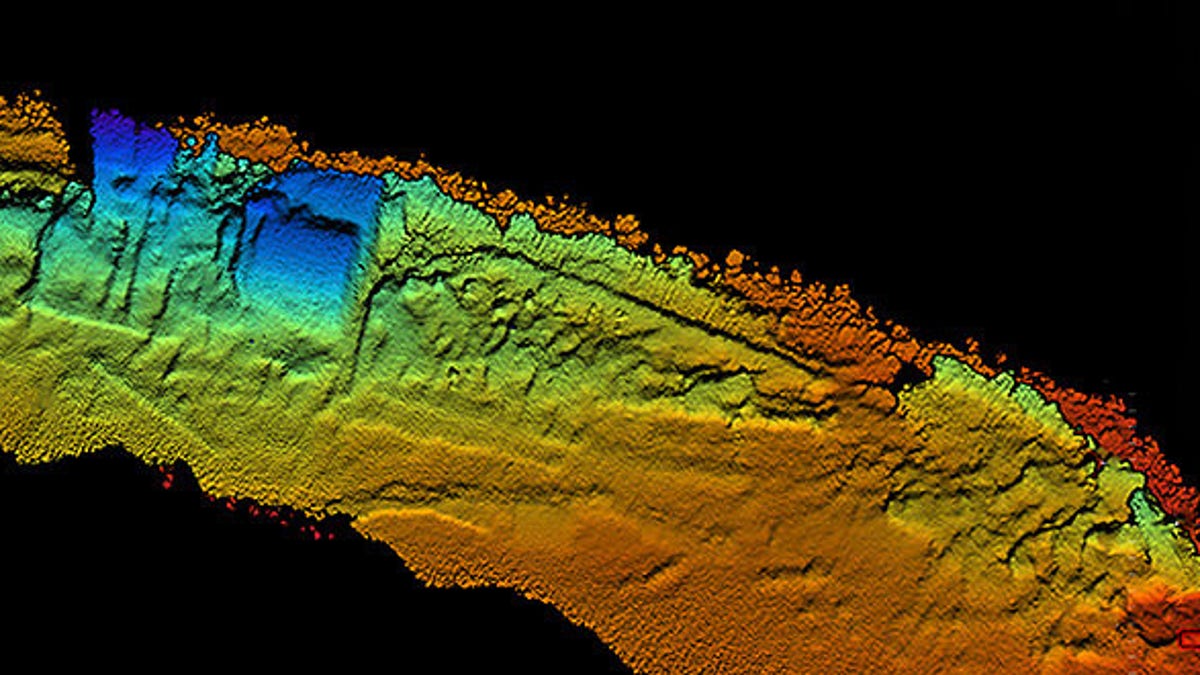
Coda Octopus 3-D Echoscope sonar, downward view of the shipwreck SS City of Chester with sternpost, (left side of sonar image) compound steam engine and boilers (in blue middle of sonar image), and bow (right side of sonar image). (Coda Octopus/NOAA)
The public can now see images of the historic San Francisco shipwreck the SS City of Rio de Janeiro for the first time since the ship sank 113 years ago in the city’s worst maritime disaster, often called the “Bay Area’s Titanic.” The National Oceanic and Atmospheric Administration (NOAA) released three-dimensional sonar maps and images of the steamship that struck rocks near the Golden Gate Bridge on Feb. 22, 1901. The accident marked a heavy loss with 128 of the ship’s total 210 passengers and crew dying in the wreck, according to a press release from the NOAA.
There were 82 survivors, rescued by fishermen in the area who heard distress calls from the sinking ship on that foggy night. Victims of the accident included the U.S. Consul-General in Hong Kong and his family, as well as Japanese and Chinese immigrants.
The ship had not been seen since the accident, and was discovered by one of NOAA’s remote submersibles in November. The wreckage was discovered 287 feet under water, just a half a mile from San Francisco’s shores, SFGate reports.
Analysis of the images is part of a two-year study by NOAA’s Office of National Marine Sanctuaries Maritime Heritage Program to take a look at San Francisco Bay shipwrecks.
“We are undertaking this exploration of the San Francisco Bay in part to learn more about its maritime heritage as well as to test recent advances in technology that will allow us to better protect and understand the rich stories found beneath the Bay’s waters,” said James Delgado, director of maritime heritage for NOAA’s Office of National Marine Sanctuaries, in the release.
As part of this study, NOAA has plotted and mapped almost 200 wrecks including four that had never been found before.
While the City of Rio wreck was initially pinpointed in 1980s, its specific locale was not known since the ship coordinates that the salvagers reported did not match any previously recorded by the NOAA.
Delgado worked and his team worked with Robert Schwemmer, West Coast Regional Maritime Heritage Coordinator, as well as Gary Fabian, a sonar expert.
The wreck will remain where it is, and, according to the release, long-circulated rumors that the vessel was filled with “silver treasure” are false. What was believed to be “Chinese silver” were bars of tin.
Locating the missing ship was “like turning on the light in a dark room,” Delgado told SFGate. “That’s why we do what we do.”
